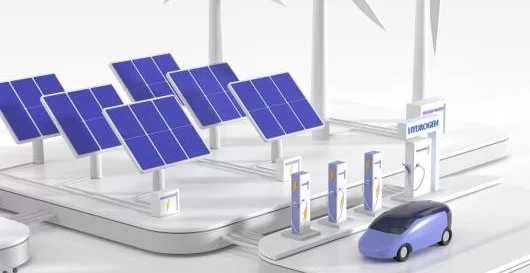Hybrid Solar Solutions: Transforming the Energy Landscape
In the quest for sustainable and efficient energy sources, hybrid solar solutions have emerged as a revolutionary approach, promising to reshape the way we generate and consume power. These solutions combine solar energy with other complementary technologies, offering a more reliable, flexible, and optimized energy supply.

The concept of hybrid solar solutions is based on the recognition that solar power alone, while abundant and clean, has certain limitations. The intermittent nature of sunlight and the variable output of solar panels present challenges in meeting consistent energy demands. This is where the integration of additional elements comes into play.
One common form of hybrid solar solution is the combination of solar photovoltaic (PV) panels with energy storage systems. Batteries, for instance, can store the excess electricity generated by the solar panels during peak sunlight hours and release it when needed, such as during cloudy days or at night. This not only ensures a continuous power supply but also helps to balance the grid and reduce reliance on traditional power sources during periods of low solar generation.
Another prevalent hybrid approach involves coupling solar with other renewable energy sources like wind turbines. The complementary nature of solar and wind – with wind often stronger at night and during certain weather conditions when solar output is lower – creates a more stable and consistent power generation profile. Such combinations are particularly beneficial in areas where both solar and wind resources are abundant, maximizing the utilization of renewable energy throughout the day and across different seasons.
Hybrid solar solutions also extend to integration with conventional power generation methods. In some cases, solar PV systems are combined with diesel generators or natural gas turbines. This hybridization allows for a seamless transition between solar-powered operation and backup from conventional sources when necessary. It provides a reliable energy supply, especially in critical applications or locations where uninterrupted power is essential.
The benefits of hybrid solar solutions are numerous and far-reaching. Firstly, they enhance the reliability and predictability of energy supply. By combining multiple energy sources or integrating storage, the risk of power outages and fluctuations is significantly reduced, making it suitable for a wide range of applications from residential homes to large-scale industrial facilities.
Secondly, these solutions offer increased energy independence. Homes and businesses equipped with hybrid solar systems can reduce their dependence on the centralized power grid, providing greater control over their energy consumption and costs. This is especially valuable in remote areas or during times of grid instability.
From an environmental perspective, hybrid solar solutions contribute to a significant reduction in greenhouse gas emissions. By displacing fossil fuel-based power generation to a greater extent, they play a crucial role in mitigating climate change and promoting a cleaner and healthier planet.
Economically, while the initial investment in hybrid solar systems may be higher compared to standalone solar installations, the long-term savings and benefits can outweigh the upfront costs. Reduced electricity bills, potential government incentives, and the extended lifespan and efficiency of the combined systems can lead to a more favorable return on investment over time.
However, the implementation of hybrid solutions is not without challenges. The complexity of integrating multiple technologies requires careful system design, coordination, and advanced control strategies. Compatibility issues between different components, as well as the need for efficient energy management systems, pose technical hurdles that need to be overcome through expertise and innovation.
Furthermore, the regulatory and policy framework for hybrid solutions is still evolving in many regions. Clear and supportive policies that encourage investment, facilitate grid integration, and establish fair compensation mechanisms for excess energy fed back to the grid are crucial for the widespread adoption and success of these technologies.
Despite these challenges, the momentum behind hybrid solutions continues to grow. Advances in technology, decreasing costs of solar panels, batteries, and other components, along with increasing awareness of the need for sustainable energy, are driving their increased deployment.
In conclusion, hybrid solar solutions represent a dynamic and forward-thinking approach to meeting our energy needs. By combining the power of solar with other complementary technologies, we are taking significant steps towards a more sustainable, resilient, and energy-efficient future. As research and development efforts persist, and as market and policy conditions continue to mature, these solutions have the potential to become the norm rather than the exception, transforming our energy landscape for the better.
